Abstract
1. In seventy-six penetrations through areas 17 and 18 of the cat, neurones were regularly sampled at intervals of 100 micrometers and preferred orientation, optimal spatial frequency and resolving power were determined for each neurone in response to drifting sinusoidal gratings. 2. As already shown for area 17, in tangential penetrations through area 18, whenever the preferred orientation rotates progressively from cell to cell, the optimal spatial frequency tends to remain constant. 3. A statistical analysis on 1574 cells in areas 17 and 18 showed that for pairs of cells separated 200-300 micrometers along a track the difference in preferred orientation delta alpha and the difference in optimal spatial frequency delta f are not randomly distributed: cell pairs with small delta alpha are most likely to have large delta f and vice versa. 4. These findings indicate that in areas 17 and 18 neurones with the same optimal frequency are aligned along a direction orthogonal to the orientation columns. 5. The optimal spatial frequency, resolving power and the velocity cut-off were averaged for cells from different penetrations located in the same cortical layer or sublayer of area 18: mean optimal spatial frequency and acuity are highest in layer IV and lowest in layers II and V, while the velocity cut-off is highest in layers II and V and lowest in layer IV. 6. Our data suggest that the layering of cells according to optimal spatial frequency is a more subtle subdivision than the six histological layers.
Full text
PDF

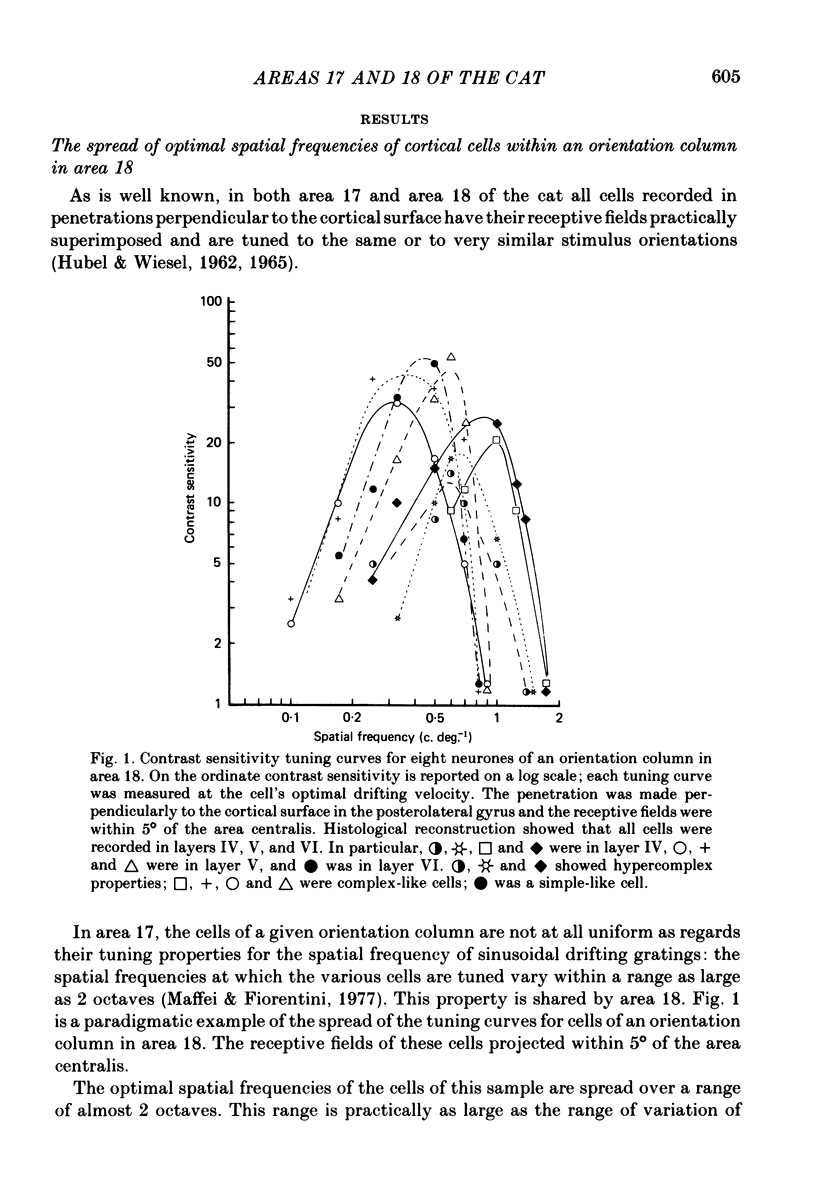






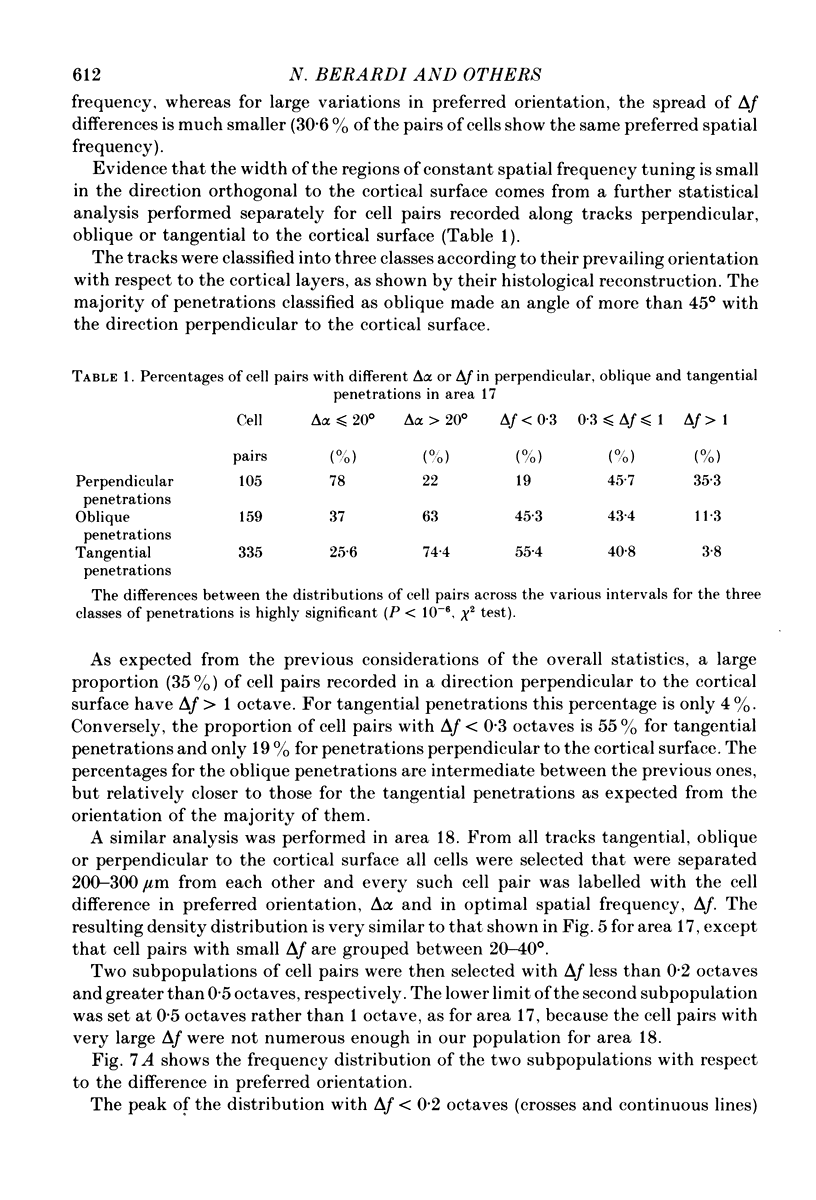
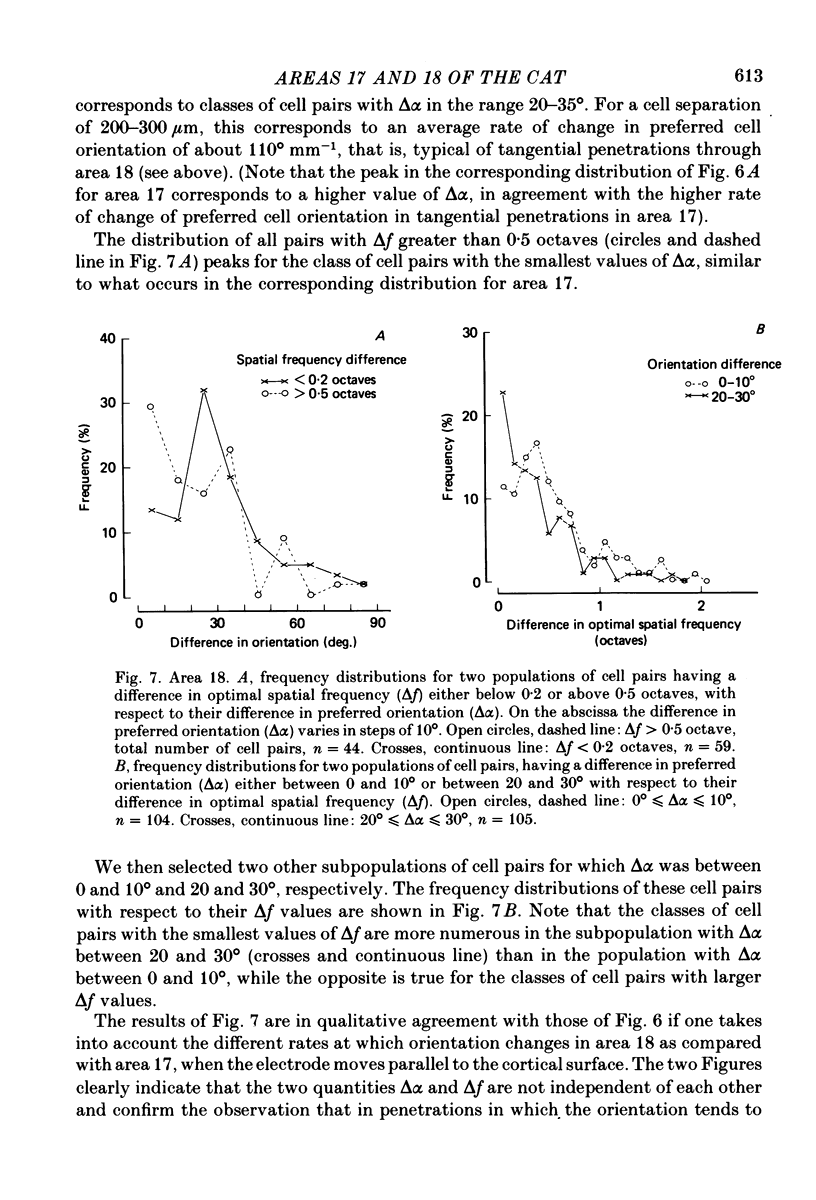

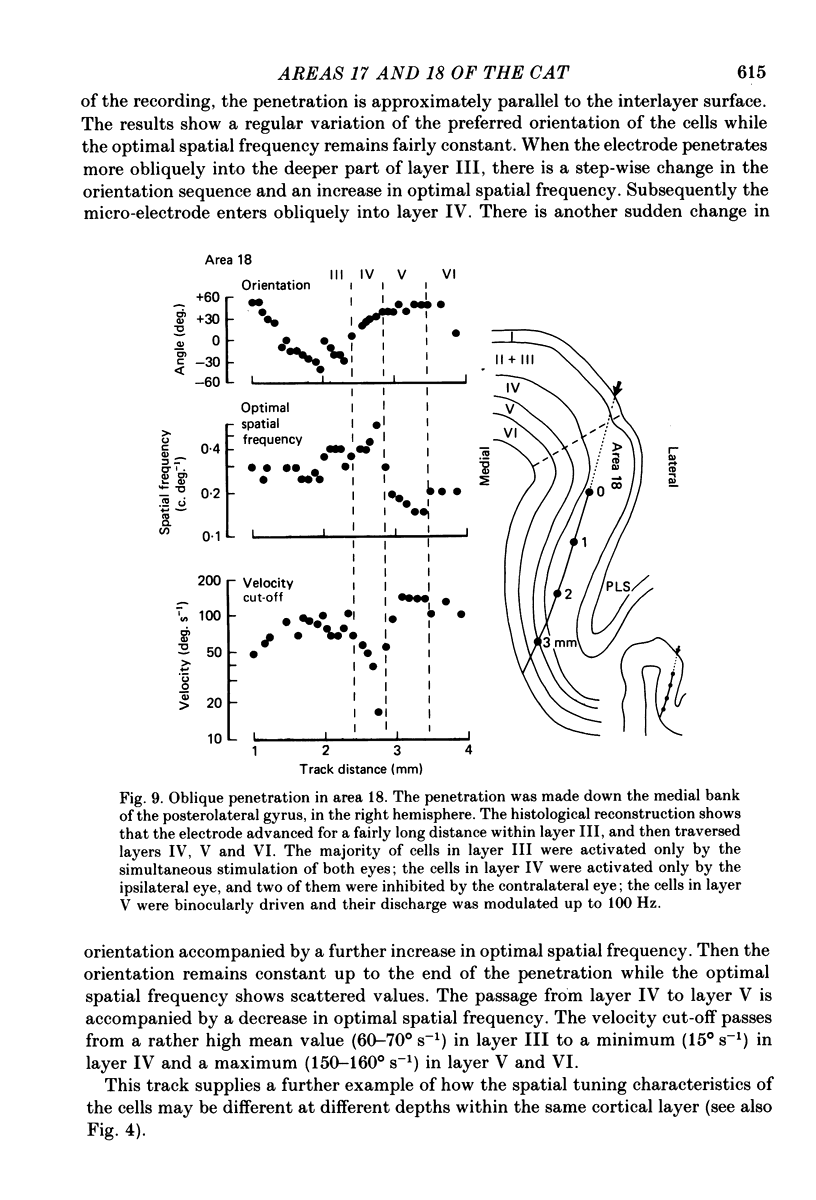

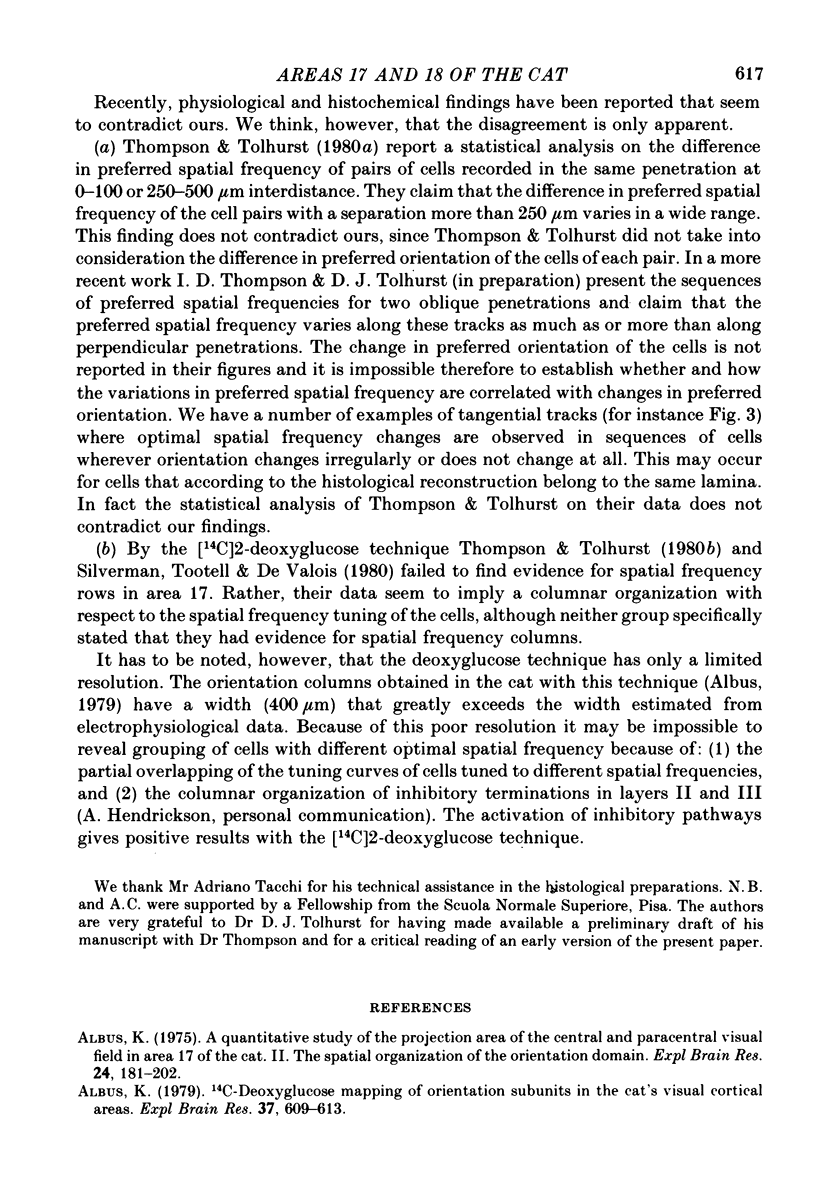
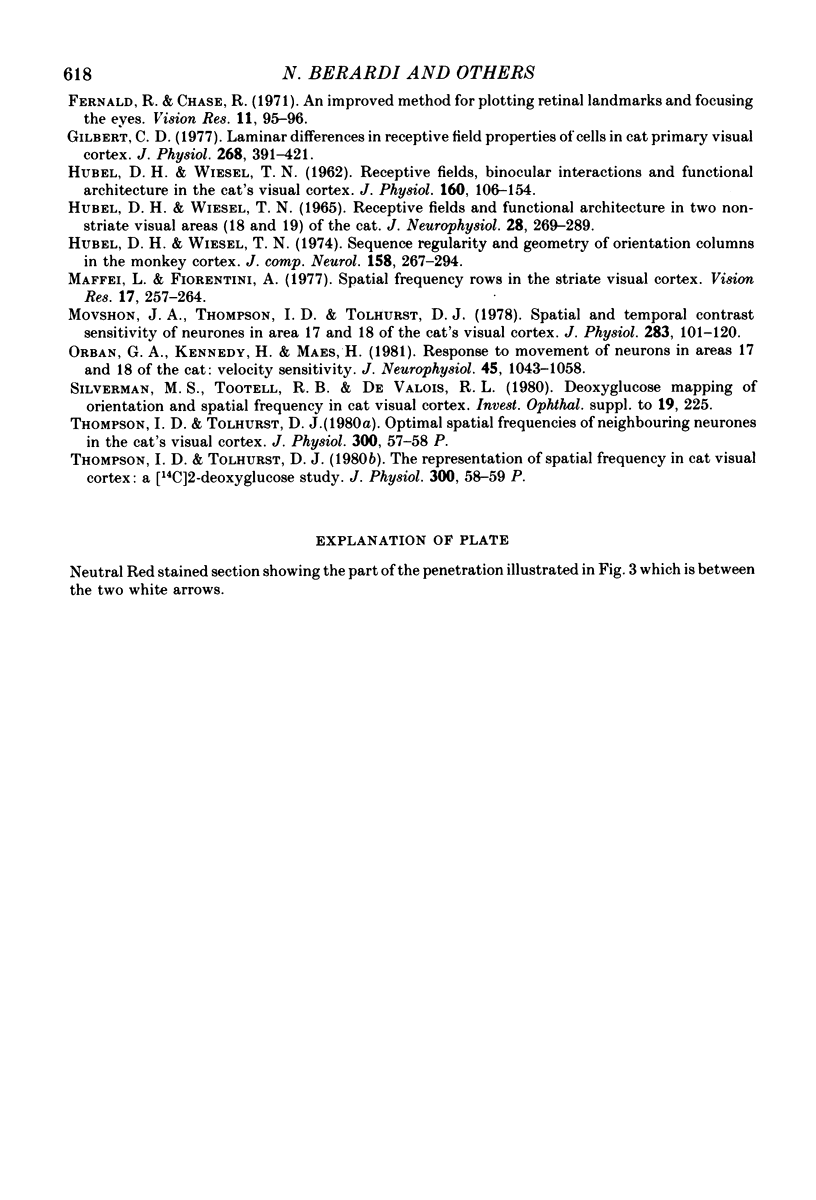

Images in this article
Selected References
These references are in PubMed. This may not be the complete list of references from this article.
- Albus K. 14C-deoxyglucose mapping of orientation subunits in the cats visual cortical areas. Exp Brain Res. 1979;37(3):609–613. doi: 10.1007/BF00236828. [DOI] [PubMed] [Google Scholar]
- Albus K. A quantitative study of the projection area of the central and the paracentral visual field in area 17 of the cat. II. The spatial organization of the orientation domain. Exp Brain Res. 1975 Dec 22;24(2):181–202. doi: 10.1007/BF00234062. [DOI] [PubMed] [Google Scholar]
- Fernald R., Chase R. An improved method for plotting retinal landmarks and focusing the eyes. Vision Res. 1971 Jan;11(1):95–96. doi: 10.1016/0042-6989(71)90207-0. [DOI] [PubMed] [Google Scholar]
- Gilbert C. D. Laminar differences in receptive field properties of cells in cat primary visual cortex. J Physiol. 1977 Jun;268(2):391–421. doi: 10.1113/jphysiol.1977.sp011863. [DOI] [PMC free article] [PubMed] [Google Scholar]
- HUBEL D. H., WIESEL T. N. RECEPTIVE FIELDS AND FUNCTIONAL ARCHITECTURE IN TWO NONSTRIATE VISUAL AREAS (18 AND 19) OF THE CAT. J Neurophysiol. 1965 Mar;28:229–289. doi: 10.1152/jn.1965.28.2.229. [DOI] [PubMed] [Google Scholar]
- HUBEL D. H., WIESEL T. N. Receptive fields, binocular interaction and functional architecture in the cat's visual cortex. J Physiol. 1962 Jan;160:106–154. doi: 10.1113/jphysiol.1962.sp006837. [DOI] [PMC free article] [PubMed] [Google Scholar]
- Hubel D. H., Wiesel T. N. Sequence regularity and geometry of orientation columns in the monkey striate cortex. J Comp Neurol. 1974 Dec 1;158(3):267–293. doi: 10.1002/cne.901580304. [DOI] [PubMed] [Google Scholar]
- Maffei L., Fiorentini A. Spatial frequency rows in the straite visual cortex. Vision Res. 1977 Feb;17(2):257–264. doi: 10.1016/0042-6989(77)90089-x. [DOI] [PubMed] [Google Scholar]
- Movshon J. A., Thompson I. D., Tolhurst D. J. Spatial and temporal contrast sensitivity of neurones in areas 17 and 18 of the cat's visual cortex. J Physiol. 1978 Oct;283:101–120. doi: 10.1113/jphysiol.1978.sp012490. [DOI] [PMC free article] [PubMed] [Google Scholar]
- Orban G. A., Kennedy H., Maes H. Response to movement of neurons in areas 17 and 18 of the cat: velocity sensitivity. J Neurophysiol. 1981 Jun;45(6):1043–1058. doi: 10.1152/jn.1981.45.6.1043. [DOI] [PubMed] [Google Scholar]



